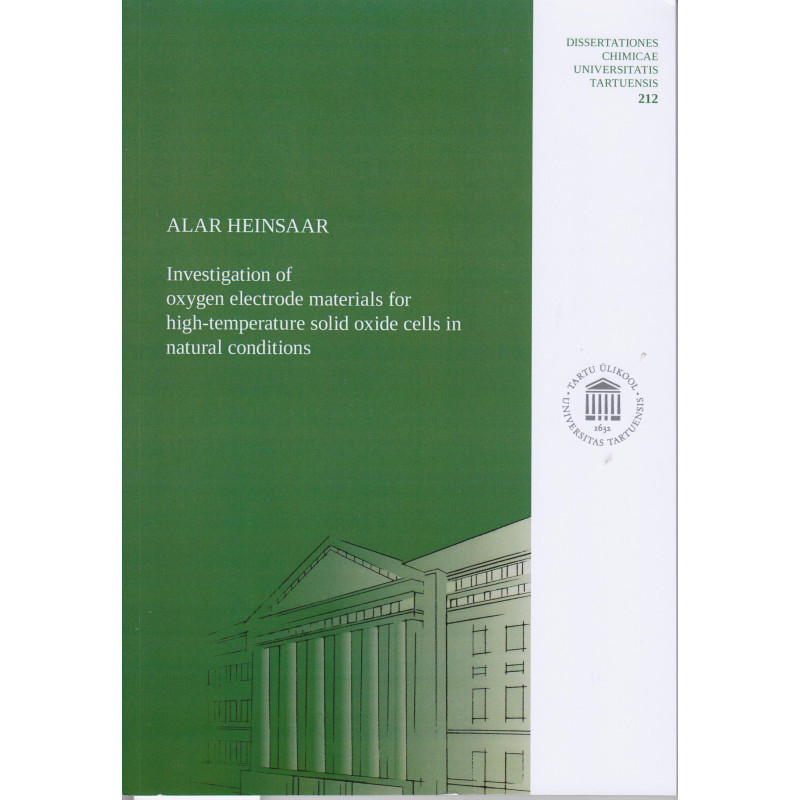



Tartu : University of Tartu Press, 2022
120 p.
ISBN: 9789949039470
Paperback, in very good condition.
Theses(doctorate).
Series: Dissertationes chimicae Universitatis Tartuensis ; 212. Summary in Estonian
Gradually strictening energy production standards as well as the desire to adopt more efficient energy production technologies are increasing the attractiveness of clean energy conversion and storage systems, including the solid oxide fuel cells. Unfortunately, they have not yet been able to compete on price with existing technologies. A solid oxide fuel cell is a high temperature (T > 600 ° C) device that converts the chemical energy into electrical energy with very high efficiency. Very wide variety of chemical species can be used as a fuel, for example hydrogen, alcohols, hydrocarbons, etc. Furthermore, no environmentally harmful gases are generated during the fuel oxidation reaction. Solid oxide fuel cells are already commercially available, however, their widespread use is hampered by the high production costs, which is partly caused by the problems with the time stability of the device's components. Majority of the commercial systems implement ceramic oxygen electrodes, which have poor tolerance to CO2 and H2O found in the atmospheric air and, therefore, need air purifying systems, which remove unwanted gases. When CO2 and H2O from the air come into contact with the oxygen electrode, the material begins to degrade, i.e., its activity decreases. One way to increase the stability towards CO2 and H2O is to modify their chemical composition. Improved materials reduce the need for more sophisticated systems, hence increasing overall efficiency and reducing production costs. Current dissertation focused on the synthesis and characterization of commercially used oxygen electrodes to specify the effect of CO2 and H2O on the activity and stability of such materials. Thereafter, a series of modified materials with improved tolerance to CO2 and H2O were synthesized and characterized. The modified materials proved to be significantly more in time stable than the oxygen electrodes used in commercial systems.